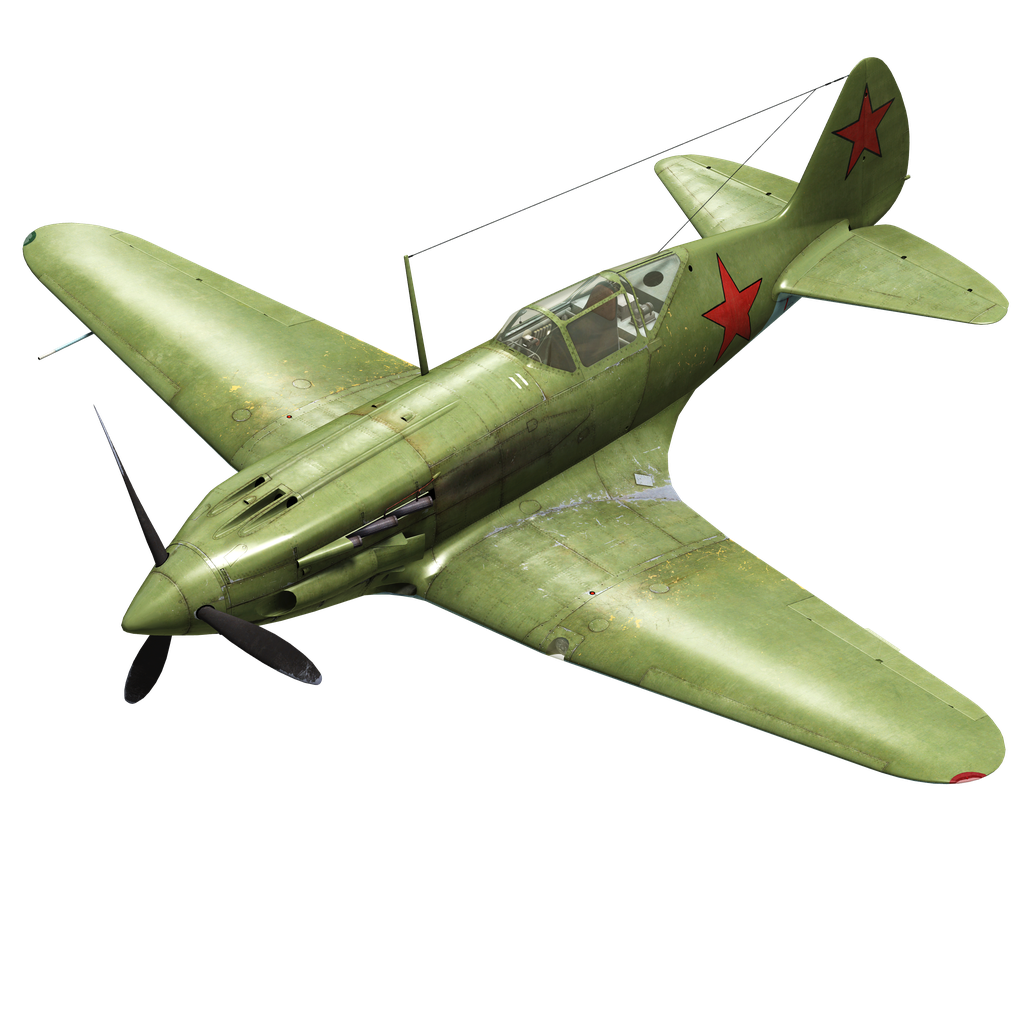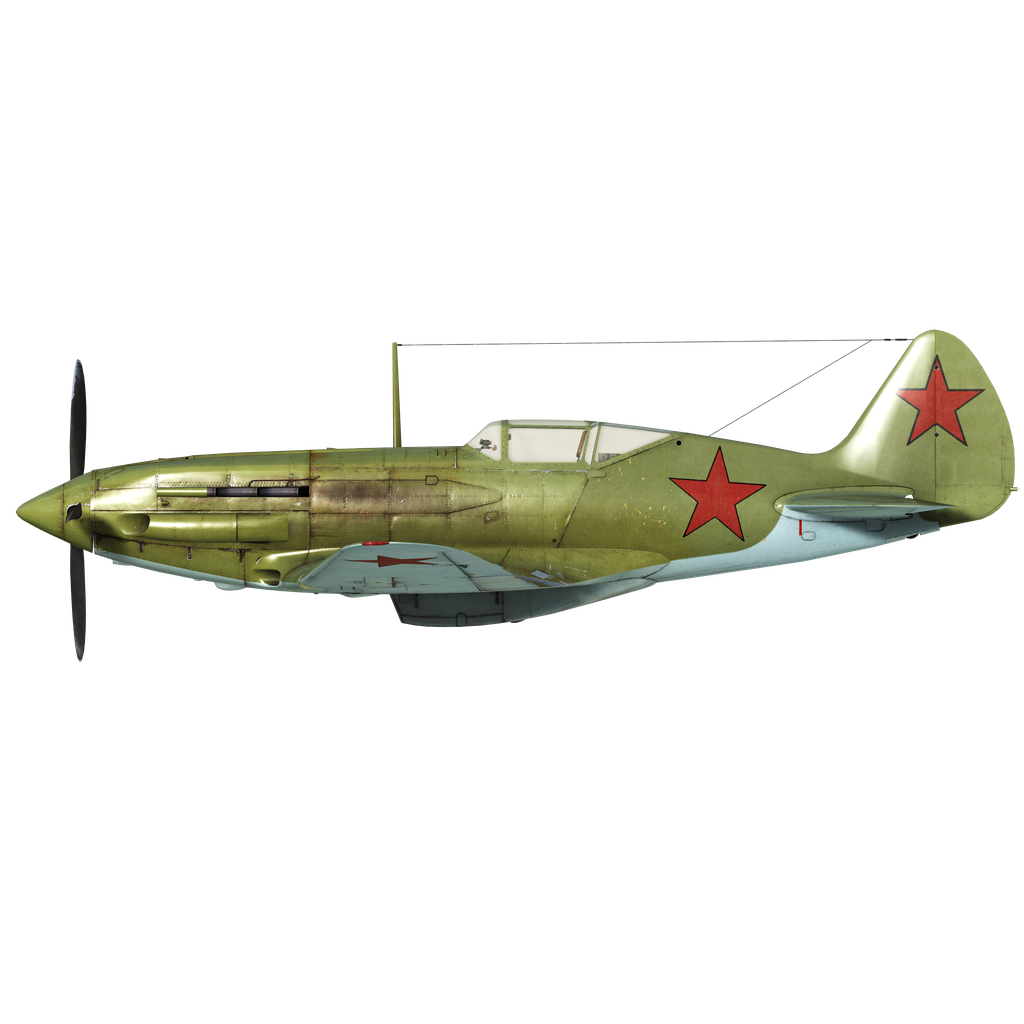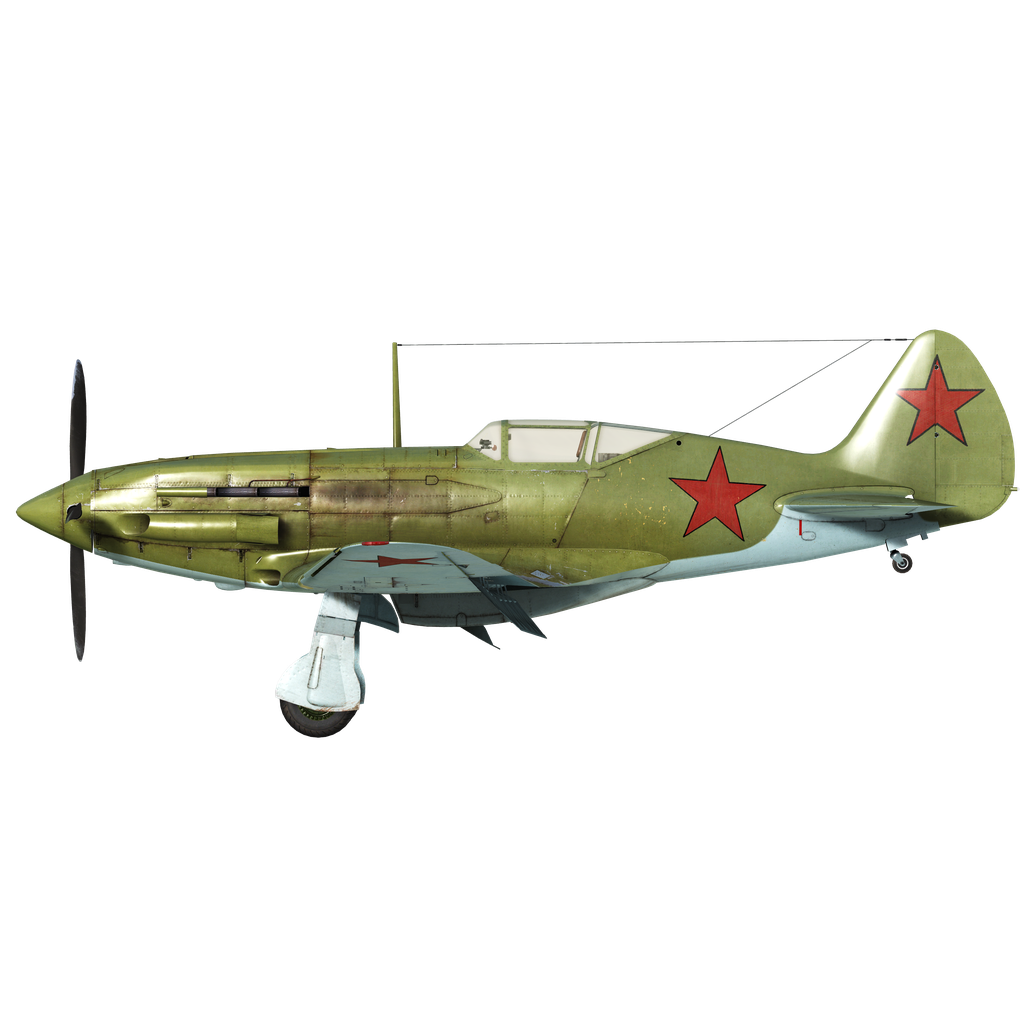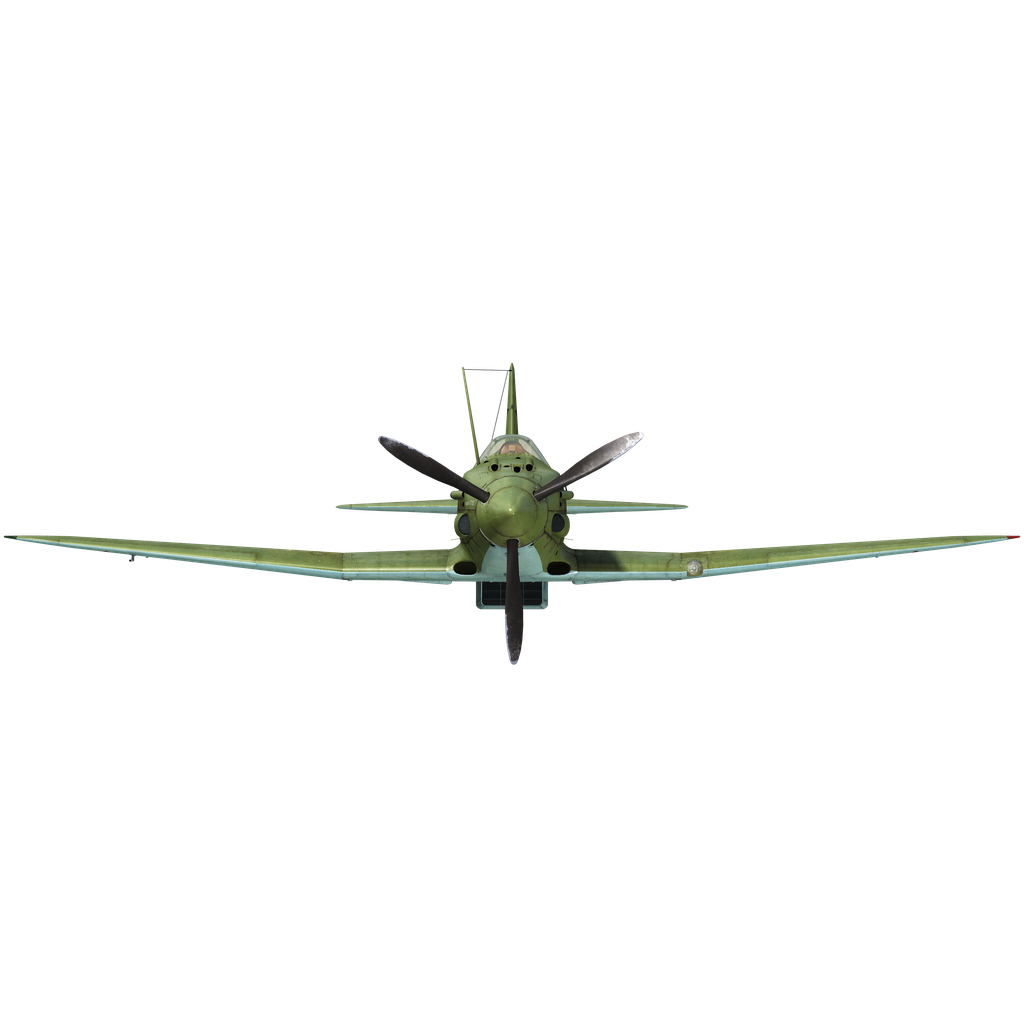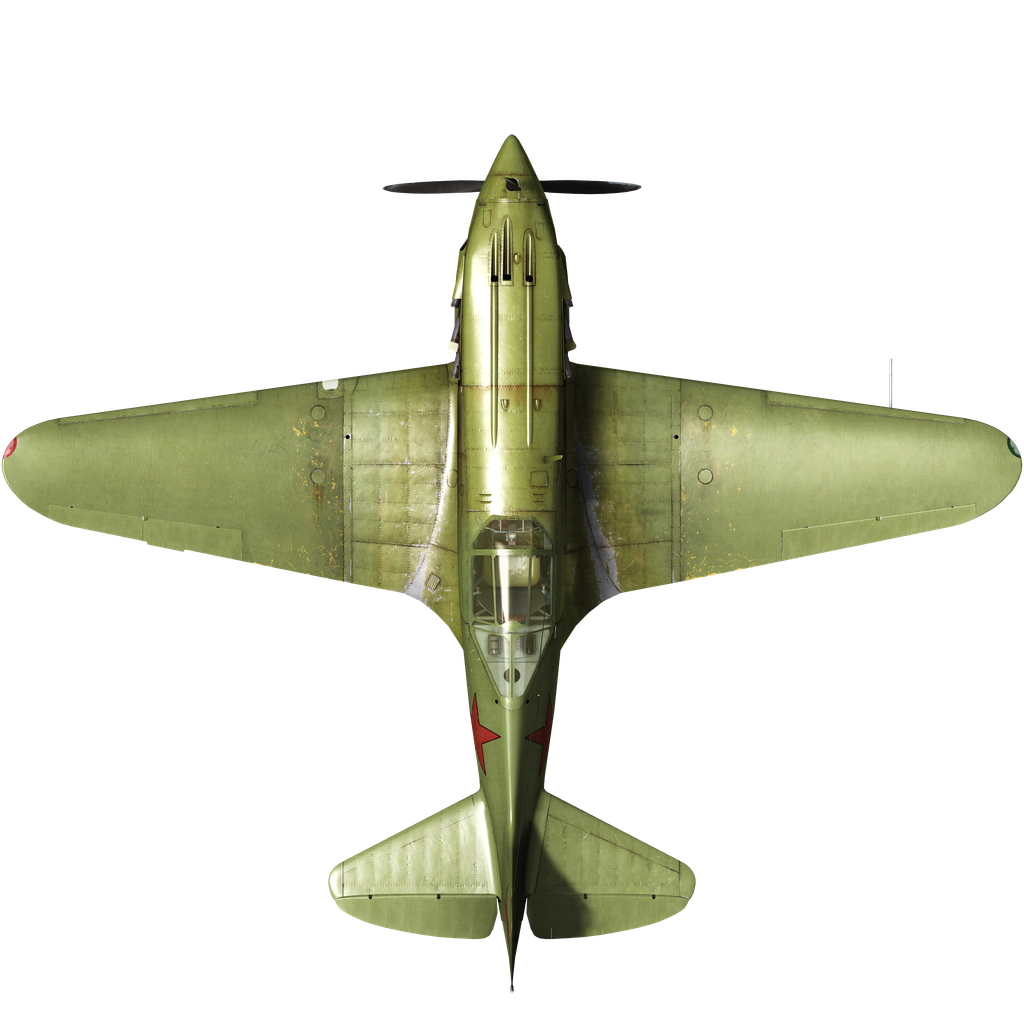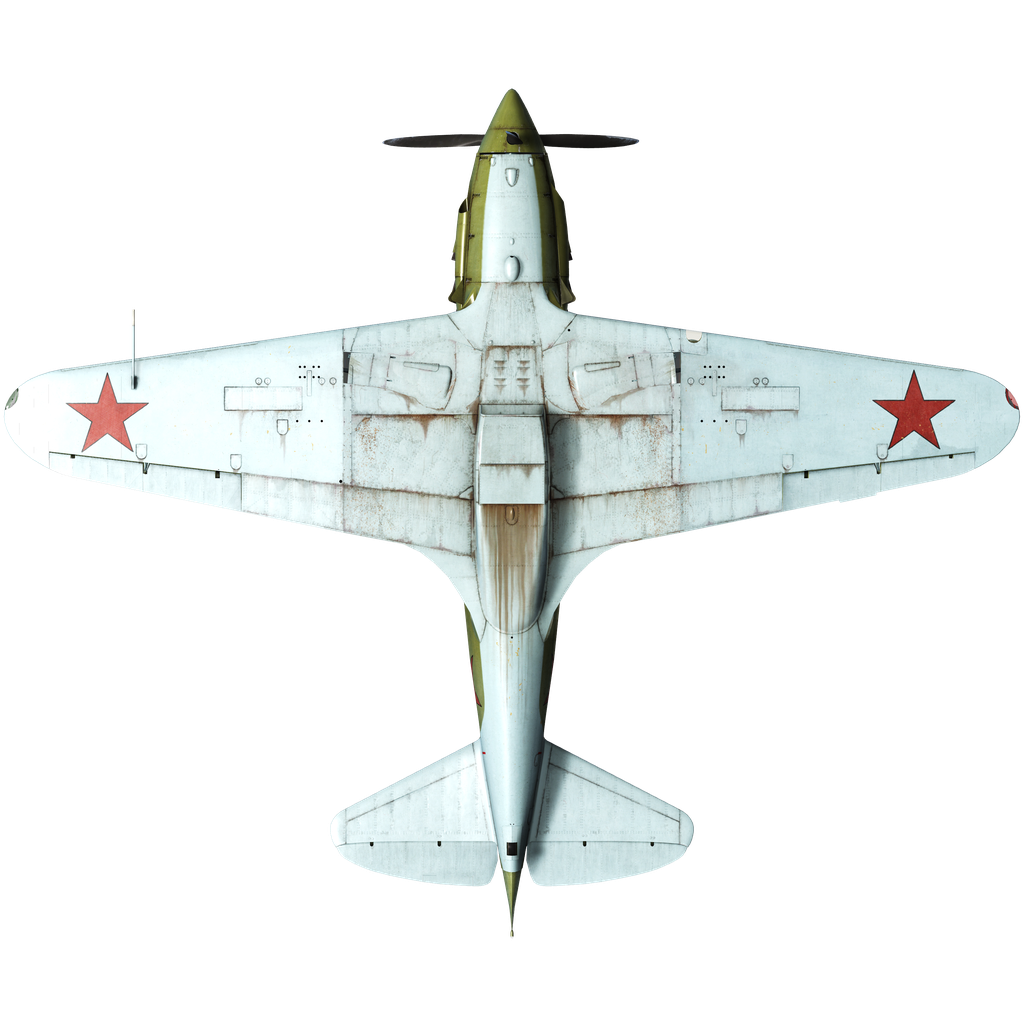The preliminary design of the I-200 front-line fighter was developed at the Polikarpov Design Bureau for the Mikulin AM-37 engine. However, when a design bureau assigned by the OKB and headed by Mikoyan and Gurevich began a detailed study of the project in 1939, the AM-37 was never completed. As a result, the AM-35A high-altitude engine, designed for use on long-range high-altitude bombers, was installed on the aircraft, and the aircraft was transformed into a high-altitude fighter. On April 5, 1940, the I-200 prototype was flown for the first time. Given the name MiG-1, the aircraft was put into mass production, but the flight range was considered insufficient by the leadership of the Soviet Air Force, and a new modification, the MiG-3, was developed. To increase the range, a 250-liter fuel tank was installed in the fuselage, while the AM-35A engine was moved forward to maintain alignment, but the changes somewhat worsened the aircraft's controllability.
The MiG-3 of the 24th series was a single-engine, single-seat, low-wing monoplane. The design of the plane was of mixed construction: the front part of the fuselage and the middle section were made of metal, and the rear part of the fuselage and the wings were made of wood. The fin was all metal, the tail was wooden, and the rudders were covered with canvas. The landing gear consisted of two main legs with a tail unit, retractable in flight. The aircraft was divided into complete structural and production units. Removable wings, a removable fuselage, and a landing gear with very simple kinematics allowed parallel assembly of the units on different stands and convenient assembly on a conveyor belt. The AM-35A liquid-cooled engine with an AV-5L-123 propeller developed 1350 hp in takeoff mode and 1200 hp in nominal mode at an altitude of 6000 m. To improve stability and flight safety, the capacity of the rear fuselage tank was reduced to 140 liters. As a result, the aircraft was easier to control during takeoff, turns, and landings, the takeoff run length was reduced, and climb stability was slightly improved.
The armament consisted of one large-caliber and two rifle-caliber machine guns. If necessary, bombs or unguided rockets could be carried under the wings.
MiG-3s of the 24th series arrived at the front in July 1941. At the beginning of the war, MiGs formed a significant part of the fighter fleet of the Western Military Districts, but unfortunately, the pilots did not have time to master these machines before the war, as a result, their losses amounted to almost 75% in the first days. But even in those terrible days, the MiG-3 showed what it could do in the right hands. Perhaps the first victory of a Soviet pilot in the war was won with it: political instructor Sokolov from the 129th IAP announced the downing of a German plane already at 4 am on June 22. On June 26, the future famous ace, and three-time Hero of the Soviet Union Alexander Pokryshkin shot down his first Messerschmitt in a MiG-3. Despite some successes, the combat use of the MiG-3 in front-line aviation was not very effective.
It performed much better in air defense units. These regiments, manned by experienced pilots, suffered less from accidents and disasters. Thanks to their training, their pilots could fight successfully day and night, and in air defense, the altitude of the fighter was necessary, since German bombers preferred to fly at high altitudes to protect themselves from anti-aircraft fire. By December 1941, MiG-3s accounted for more than a third of the air defense fighters, but after the production of the aircraft was discontinued (such engines were needed for the mass production of Il-2 attack aircraft), their number gradually began to decline. The ingenious design of the aircraft allowed the technical staff to assemble one from several defective aircraft directly on the airfield: the last MiGs were written off only in June 1944 due to wear and tear and lack of spare parts. According to official Soviet data, MiG-3 pilots shot down 710 enemy aircraft during the war, 43 of them at night. This is the highest result of all types of Soviet air defense fighters.
Used sources:
1. S. Ivanov “MiG-3” War in the air, No. 115 2004
2. V. Shavrov “History of aircraft designs in the USSR 1938-1950.” 1988
3. Materials from the site airwar.ru
